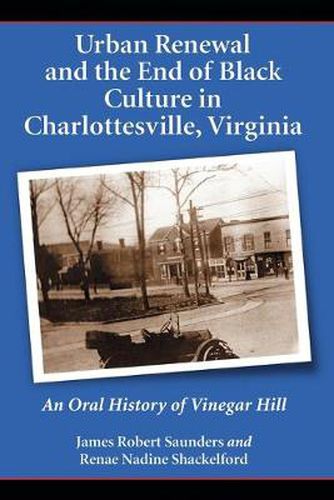Readings Newsletter
Become a Readings Member to make your shopping experience even easier.
Sign in or sign up for free!
You’re not far away from qualifying for FREE standard shipping within Australia
You’ve qualified for FREE standard shipping within Australia
The cart is loading…






This title is printed to order. This book may have been self-published. If so, we cannot guarantee the quality of the content. In the main most books will have gone through the editing process however some may not. We therefore suggest that you be aware of this before ordering this book. If in doubt check either the author or publisher’s details as we are unable to accept any returns unless they are faulty. Please contact us if you have any questions.
From the 1920s through the 1950s, the center of black social and business life in Charlottesville, Virginia, was the area known as Vinegar Hill. But in 1960, noting the prevalence of aging frame houses and
substandard
conditions such as outdoor toilets, voters decided that Vinegar Hill would be redeveloped. Charlottesville’s black residents lost a cultural center, largely because they were deprived of a voice in government. Vinegar Hill’s displaced residents discuss the loss of homes and businesses, and the impact of the project on black life in Charlottesville. The interviews raise questions about motivations behind urban renewal.
$9.00 standard shipping within Australia
FREE standard shipping within Australia for orders over $100.00
Express & International shipping calculated at checkout
This title is printed to order. This book may have been self-published. If so, we cannot guarantee the quality of the content. In the main most books will have gone through the editing process however some may not. We therefore suggest that you be aware of this before ordering this book. If in doubt check either the author or publisher’s details as we are unable to accept any returns unless they are faulty. Please contact us if you have any questions.
From the 1920s through the 1950s, the center of black social and business life in Charlottesville, Virginia, was the area known as Vinegar Hill. But in 1960, noting the prevalence of aging frame houses and
substandard
conditions such as outdoor toilets, voters decided that Vinegar Hill would be redeveloped. Charlottesville’s black residents lost a cultural center, largely because they were deprived of a voice in government. Vinegar Hill’s displaced residents discuss the loss of homes and businesses, and the impact of the project on black life in Charlottesville. The interviews raise questions about motivations behind urban renewal.